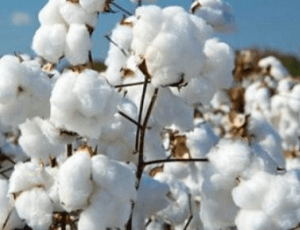Ghana can produce 250,000 metric tons of lint cotton – Ahwoi
 Ghana has the potential to produce 250,000 metric tons of lint cotton in the medium term, Mr Kwesi Ahwoi, Minister of Food and Agriculture has said.
Ghana has the potential to produce 250,000 metric tons of lint cotton in the medium term, Mr Kwesi Ahwoi, Minister of Food and Agriculture has said.
He said such tonnage would require the involvement of about 500,000 farmers in cotton cultivation across the three northern regions.
Mr Ahwoi said with the current world market prices averaging US$2,500 per metric tons, the three northern regions could have earned an income of US$625 million for Ghana during the 2010 crop season.
Mr Ahwoi was addressing a durbar of cotton farmers’ at Tumu to launch the cotton “White Gold” campaign in the North West Zone of the Upper West Region on Saturday.
He said the target for this year was to get 100,000 farmers in cotton production to benefit from the impressive world market price of lint cotton.
Government has therefore embarked on a cotton sector revival programme and had zoned the cotton belt into three and assigned to three companies for the production of the crop.
The North-Eastern Zone has been allocated to Wienco Ghana Limited in partnership with Geo-Cotton, French Company. It covers Kasina-Nankana, Tongo/Nabdam, Bawku West, Bawku Municipality, Garu-Tempani, Bongo, Builsa, West Mamprusi, East Mamprusi, Buunkpurugu, Gushiegu, Saboba, Chereponi and Zubzugu.
Olam Ghana Limited has also been allocated the North- Western Zone, covering Sissala East, Sissala West, Jirapa, Lambussie/Karni, Lawra, Nadowli, Wa East and Wa West Districts and Wa Municipality.
Plexus in partnership with Amajaro Ghana Limited was allocated to the North-Central Zone, which comprised Savelugu, Tolon/Kumbungu, Bimbilla, Wullensi, Salaga, Bole, Damongo, Buipe, Sawla-Tuna-Kalba and Kpandai districts as well as Yendi Municipality and Tamale Metropolis.
Mr Ahwoi said the Ghana Cotton Company Limited would no longer be involved in the production of seed cotton, rather the company and other private ginneries previously involved in cotton production, would now concentrate on ginning cotton supplied to them by the three companies under tolling arrangements.
He said government would not permit the establishment of new ginneries until the maximum utilization of the present national installed ginning capacity of close to 90,000 metric tons of lint cotton was met.
The Sector Minister announced that the World Bank and other partners were ready and willing to fund programmes for the building of strong farmer-organisations across the cotton zones for effective dealings with the private companies operating in the zones.
Government had also sought for international cooperation and support from UNIDO and the Cotton Institute of Egypt to partner the Savannah Agricultural Research Institute and Ministry of Food and Agriculture to improve seed varieties and agronomics.
The World Bank would also fund the establishment of Cotton Secretariat with experts to help in the revival effort while rural infrastructure, including the rehabilitation of roads in cotton zones would be developed to support the cotton sector.
Mr Ahwoi said government would soon convene a meeting of a Cotton Price Fixing Committee composed of private companies, development partners and leadership of the farmers’ organisation to begin negotiations towards the determination of the minimum price of seed cotton in the coming season.
He assured private companies of government’s determination to support them and take all appropriate steps to protect the interest of the companies and that of the farmers for the mutual benefit of the two bodies.
He appealed to the companies to strictly adhered to government’s policy measures and make cotton the “gold” of the North, saying: “We must cultivate cotton to enrich ourselves and develop our communities”.
Mr Ahwoi challenged the various district and municipal assemblies, regional and district directors of agriculture and the agricultural extension agents to take advantage of the opportunity abound in cotton and take ownership of the campaign, work together in partnership and encourage farmers to grow the crop.
Source: GNA
